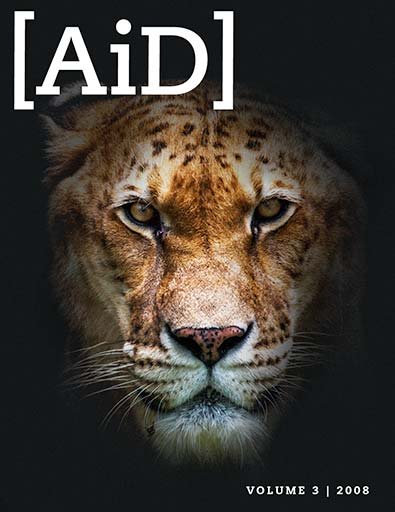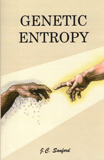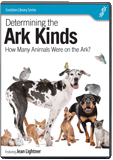
Explaining Diversity within Created Kinds
A Lesson from a Lowly Crustacean
Abstract
What can the lowly crustacean teach about genetic diversity? Quite a bit, as it turns out.
Keywords: diversity, creation, kinds, Biblical creationists, species, breeds, crossbreeding, mitochondrial DNA, hybrids, copepods, Bible
Biblical creationists believe that animals were created according to their kinds.1 Interestingly, there is considerable diversity within created kinds today. For example, horses, donkeys, and zebras are all believed to have descended from an original created kind, yet today they are classified as different species. This brings up some fascinating questions about how and why animals within a kind diverge.
Sometimes when dissimilar animals are bred, such as dogs from different breeds, the offspring are stronger and healthier than the parents. This principle is commonly applied in agriculture where hybrid corn and crossbred livestock are an important means of maintaining high productivity. However, if the parents are too dissimilar, the opposite can happen. When hybrids are less fit, it is termed “outbreeding depression.” An example of this was studied in the copepod Tigriopus californicus, a tiny crustacean living in rock pools of the high intertidal zone on the coast of California.2 The researchers found that inbred hybrids were not able to properly upregulate (increase the product of) genes in mitochondrial DNA (mtDNA) in response to salinity stress (increase in salt concentration).3
Amazing Mitochondrial DNA
The majority of DNA in all animals is found in the nucleus of the cell. However, there is some important DNA found in mitochondria, tiny organelles outside the nucleus in the cytoplasm of the cell. Mitochondria are responsible for providing a usable form of energy for the cell, and mtDNA encodes some of the genes necessary for this function.
One curious thing about mtDNA is that it has a much higher mutation rate than nuclear DNA. Occasionally these mutations are associated with disease, but many times they are not. It had been thought that these mutations are generally neutral and accumulate at a constant rate. Based on these assumptions, scientists have attempted to use mtDNA as a molecular clock. The idea is that if one can estimate the current mutation rate and count the genetic differences between two species, one can mathematically calculate approximately when those species diverged. Of course this also assumes the two species are actually related. Scientists were surprised to find that the rate at which the clock “ticks” (rate of mutation) was significantly different when based on actual measurements compared to the rate estimated based on evolutionary assumptions.4 Also, a number of studies have demonstrated that nonrandom processes, including perhaps selection, affect the pattern seen in mtDNA. This undermines its usefulness in dating historic events.5
Not all genes necessary for the proper function of mitochondria are in mtDNA; most of them are in the nuclear DNA. One important gene is a mitochondrial RNA polymerase (mtRPOL) that copies the information from the DNA into RNA so it can be used. This mtRPOL, although encoded in the nuclear DNA, works specifically on mtDNA. The sequences of both the mtRPOL gene and genes in the mtDNA differed between the three populations of T. californicus investigated.
Hybrid Copepods Have Difficulty Coping
An interesting pattern emerged when copepods from the Santa Cruz population were hybridized with those from Abalone Cove. When the hybrids had mtRPOL and mtDNA genotypes matching that of a parental population, they performed well under salinity stress conditions as did the parents. However, when hybrids had mismatched genotypes, they were unable to properly upregulate mtDNA genes in response to this stress (this is an example of outbreeding depression).6 Mismatched hybrids were also less viable than the parents or matched hybrids from this lack of coordinated gene expression.
The authors point out that the observed pattern can be explained by the Dobzhansky-Muller model. This model proposes that essentially neutral mutations develop in different groups over time; these mutations are only harmful if they are combined with another mutation that is incompatible. In this case, the mtRPOL and mtDNA were co-adapted within the two different copepod populations. When they were mismatched, there was a lack of coordinated gene expression, and the hybrids were not able to respond well to the applied stress.
A very different pattern was observed in hybrids between copepods from San Diego and the other two populations. Hybrids with matched mtRPOL–mtDNA were less able to upregulate mitochondrial genes than parental controls or mismatched hybrids. The San Diego mtRPOL genotype was never favored in the hybrids. The authors explained this with a different model proposed by Kimura. In this model harmful mutations arise, but their harmful effects are neutralized by subsequent mutation. The authors propose that the San Diego mtRPOL resulted from a harmful mutation, but that some other unidentified mutation has neutralized it within the San Diego population. Therefore, the harmful effects of the mutation are only seen when the unidentified mutation is lost through the interbreeding of hybrids.
A Creationist Analysis: Start with the Bible
The Bible gives a record of creation and history that is critical to properly understanding the world around us.
The Bible gives a record of creation and history that is critical to properly understanding the world around us. It records that animals were created according to their kinds and told to reproduce and fill the earth.7 While the Bible does not give many specifics about how individual kinds have changed, it does give a good idea about two basic types of changes we might expect to find. First, we know that soon after creation, mankind rebelled and brought sin and death into the world.8 This present world is in bondage to decay; so, we expect to see degenerative changes occurring within creatures.9 However, the Bible also indicates that God provides and cares for His creatures; He intends for the earth to be inhabited.10 So, the second type of change we would expect to see is providential changes that bring glory to God as a Provider.11 The ability of copepods to upregulate certain genes in response to stress is an excellent example of a providential change.
Examine the Data
What category do mutations fall in, degenerative or providential? Mutations are commonly described as being the result of accidents or copying errors. This is an assumption largely based on the evolutionary view that life can be explained by natural processes; it was not determined scientifically. Scientific study had shown that many diseases were associated with mutations; so, creationists had generally accepted accidents as being the cause of all mutations. Therefore, many creationists had assumed mutations are just degenerative. Yet as more genetic sequencing is being done, it has become apparent that a considerable number of mutations have accumulated within kinds that are relatively neutral and do not directly cause disease. Some of these mutations add interesting variety (such as color variation).12 In fact, in certain situations mutations can provide an obvious advantage. So, while considerably more research needs to be done, it appears that mutations can fall into either category.
When reading the scientific literature, it is critical to remember that there are two different definitions of evolution. The first is “change in the genetic makeup of a population over time.” The study reviewed here falls into this category. Despite the fact that this investigation is considered evolutionary biology and the term evolution is used, nothing in the paper is inconsistent with a biblical creation worldview. The copepods certainly appear to have changed, but the changes do not suggest that they came from a non-crustacean or that they are on their way to becoming a non-crustacean.13 Ironically, this type of evolutionary research is critical to further developing the creation model and understanding speciation (changes within a kind).
The second definition of evolution includes the idea that all life on earth arose from a common ancestor. This second definition obviously contradicts the biblical testimony that all living things were created by God according to their kind. Those promoting the “common ancestor” concept blur the two definitions of evolution to make it appear that scientific studies (as the research described here) support the atheistic evolutionary worldview. It is important to realize that the evolutionary worldview requires a specific type of change not predicted by the creation model. It requires that the overall pattern of mutational change be creative, adding information for new organs and structures. Furthermore, only naturalistic processes can be invoked for the formation of this information. This pattern of creative changes has not been demonstrated scientifically.
Don’t Be Confined by Evolutionary Assumptions
It is quite curious that mtDNA should be designed to allow for changes at all. Since it codes for information essential for life, why do we see such a high number of changes in it relative to other genes? Is it because God designed it to tolerate accidental changes so life could go on? Perhaps. Was it because God designed it to change so creatures could adapt and fill the earth? Again, perhaps. If God designed it to change for the benefit of His creatures, are all the changes accidents? Perhaps not. The idea that mtDNA can become co-adapted with mtRPOL (as mentioned above in regards to the Dobzhansky-Muller model) suggests that there may be some important designed mechanisms that control this. So, while the explanations given by the authors of the article do not contradict the biblical worldview, they do not consider the possibility that designed mechanisms may be driving some of these genetic changes. The ability to think outside the evolutionary box is important for creationists as we seek to further develop our understanding of the amazing world the God created.
Footnotes
- Genesis 1:11, 21, 24–25; 6:19, 20.
- This species is actually found along the Pacific coast from southern Alaska to central Baja California; however, only populations found on the California coast were studied in the article cited below.
- C. K. Ellison and R.S. Burton, “Genotype-dependent Variation of Mitochondrial Transcription Profile in Interpopulation Hybrids,” PNAS 105 no. 41 (2008):15831–15836.
- A. Gibbons, “Calibrating the Mitochondrial Clock” Science 279 no. 5347 (1998):28–29. Retrieved from http://www.dnai.org/teacherguide/pdf/reference_romanovs.pdf on October 24, 2008.
- T. Kivisild, P. Shen, D.P. Wall, B. Do, R. Sung, K. Davis, G. Passarino, P.A. Underhill, C. Scharfe, A. Torroni, R. Scozzari, D. Modiano, A. Coppa, P. de Knijff, M. Feldman, L.L. Cavalli-Sforza, and P.J. Oefner, “The Role of Selection in the Evolution of Human Mitochondrial Genomes,” Genetics 172 (2006):373–387.
- The hybrid breakdown shows up in the F2 generation when the genes from the parent populations become more rearranged in the offspring.
- Genesis 1.
- Genesis 3.
- Romans 8:20–21.
- Psalm 147:8, 9; Matthew 6:25–34; Isaiah 45:18.
- In this discussion, the term providential change does not necessarily imply a miracle, per se. The mere fact that creatures were designed to respond to their environment in a way that promotes survival is considered providential. This is in contrast with the atheistic notion that such abilities could arise by chance.
- J. K. Lightner, Genetics of Coat Color I, ARJ 1 (2008):109–116. J.K. Lightner, “Karyotypic and Allelic Diversity in the Canid Baramin (Canidae),” Journal of Creation, in press.
- Some might argue that, since copepods are marine animals, these different alleles (different versions of a gene) have existed in copepods since creation. However, it seems unlikely that created alleles could be combined in a detrimental way in the offspring. Additionally, similar diversity is seen in animals that were preserved on the Ark where only a limited number of alleles could have been represented. So, the idea that the differences arose via mutation is reasonable, although not conclusive.
Recommended Resources

Answers in Genesis is an apologetics ministry, dedicated to helping Christians defend their faith and proclaim the good news of Jesus Christ.
- Customer Service 800.778.3390
- © 2024 Answers in Genesis




